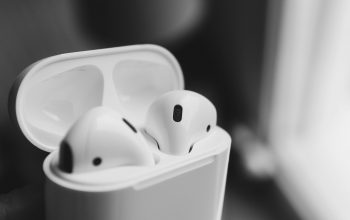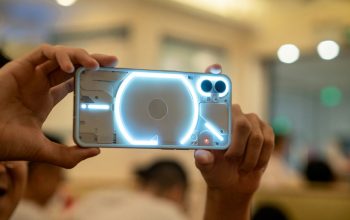Each new iPhone release sparks the same dilemma: is the upgrade to the Pro model truly necessary, or does the standard version cover all the essential features? With the iPhone 15 and iPhone 15 Pro, Apple introduces subtle but notable differences that challenge this question once again.
While the iPhone 15 Pro offers exclusive features like a telephoto camera and a sleek titanium design, the regular iPhone 15 still manages to accomplish roughly 95% of what its Pro counterpart can do. However, it’s in that remaining 5% where the distinctions become most compelling. Let’s break down these differences in design, camera, performance, and more to see if the extra investment in the Pro is justified.
Design and Display
Both the iPhone 15 and iPhone 15 Pro feature the same 6.1-inch screen size, keeping them comfortably compact compared to larger Pro Max and Ultra models. Each model fits well in one hand, although they sometimes require a double grip. The main visual distinction between the two lies in the Pro’s slimmer bezels, giving it a more modern edge-to-edge aesthetic that makes it feel slightly narrower and more refined.
Apple has swapped out the stainless steel in previous Pro models for titanium in the iPhone 15 Pro. This change makes the device lighter and offers better durability against dents. The titanium material also resists fingerprints more effectively, giving the Pro a cleaner look. However, the titanium frame can feel slippery, particularly in cold weather, which may be a consideration for those who frequently use their phone without a case.
On the other hand, the regular iPhone 15 retains an aluminum frame, which, while less durable than titanium, keeps the phone lightweight and affordable. The iPhone 15 also comes in a vibrant color range, contrasting with the Pro’s subdued tones. Interestingly, Apple has added a matte glass back to the standard iPhone 15, matching the Pro’s aesthetic and giving it a more premium feel than previous models.
Performance
Apple’s A17 Pro chip exclusively powers the iPhone 15 Pro, enhancing its efficiency and handling of advanced applications, particularly useful for graphics-intensive tasks. Meanwhile, the iPhone 15 operates on the A16 Bionic chip, which, while a generation behind, still delivers reliable performance for everyday tasks and is more than capable of supporting the latest iOS features.
The A17 Pro chip brings the Pro model a competitive edge in terms of longevity, making it a better choice for users who want a phone that will remain at the peak of performance for several years. However, for typical users who rely on their phone for standard activities like streaming, gaming, and multitasking, the A16 chip in the regular iPhone 15 should be more than sufficient.
Camera
The camera is where the iPhone 15 Pro shines, particularly due to its dedicated telephoto lens, enabling improved zoom capabilities that the regular iPhone 15 lacks. This telephoto lens provides a level of detail and clarity when capturing distant subjects that is unmatched on the standard model. Additionally, the Pro’s camera benefits from enhanced low-light performance, which means better shots in challenging lighting.
For most users, though, the dual-lens camera on the iPhone 15 is still robust, offering excellent picture quality in regular lighting and for day-to-day photography. It includes an ultra-wide lens that supports landscape shots and close-up photography, making it highly versatile even without the telephoto capabilities.
Audio Quality
Both models offer similar audio quality, making use of stereo speakers that deliver clear and rich sound. The distinction here comes down to software enhancements exclusive to the Pro model, which slightly refine the overall audio experience. However, for casual listeners and daily usage, both devices provide more than adequate sound quality for calls, music, and video streaming.
Battery and Charging
Battery life between the two models is comparable, but the Pro model tends to last slightly longer due to the efficiency of the A17 chip. Additionally, the Pro model supports faster charging when paired with Apple’s recommended chargers, allowing users to reach higher battery levels in less time.
For both models, Apple has now introduced USB-C, marking a departure from the Lightning connector. This universal port simplifies charging and data transfer and provides enhanced compatibility with other devices, including non-Apple products. The shift to USB-C brings practical convenience to both models, a welcome change for Apple users.
Features and Software
One of the iPhone 15 Pro’s unique features is the new Action Button, which replaces the traditional mute switch. This button is programmable, allowing users to assign various functions like launching the camera, starting specific apps, or even setting up custom commands through the Shortcuts app. In contrast, the regular iPhone 15 retains the classic mute switch, which, while functional, lacks the versatility of the Action Button.
Summary
The iPhone 15 Pro offers features that appeal to users who prioritize top-tier performance, advanced photography capabilities, and the sleek feel of a titanium build. Its exclusive telephoto lens, Action Button, and A17 Pro chip make it a solid choice for those who desire cutting-edge technology and anticipate using the phone for demanding applications over several years.
For most consumers, however, the iPhone 15 presents a well-rounded package that performs excellently in all essential areas. With a powerful camera, vibrant color options, and the new matte glass back, the regular iPhone 15 delivers an elevated experience that covers the vast majority of daily needs without the higher price tag.



